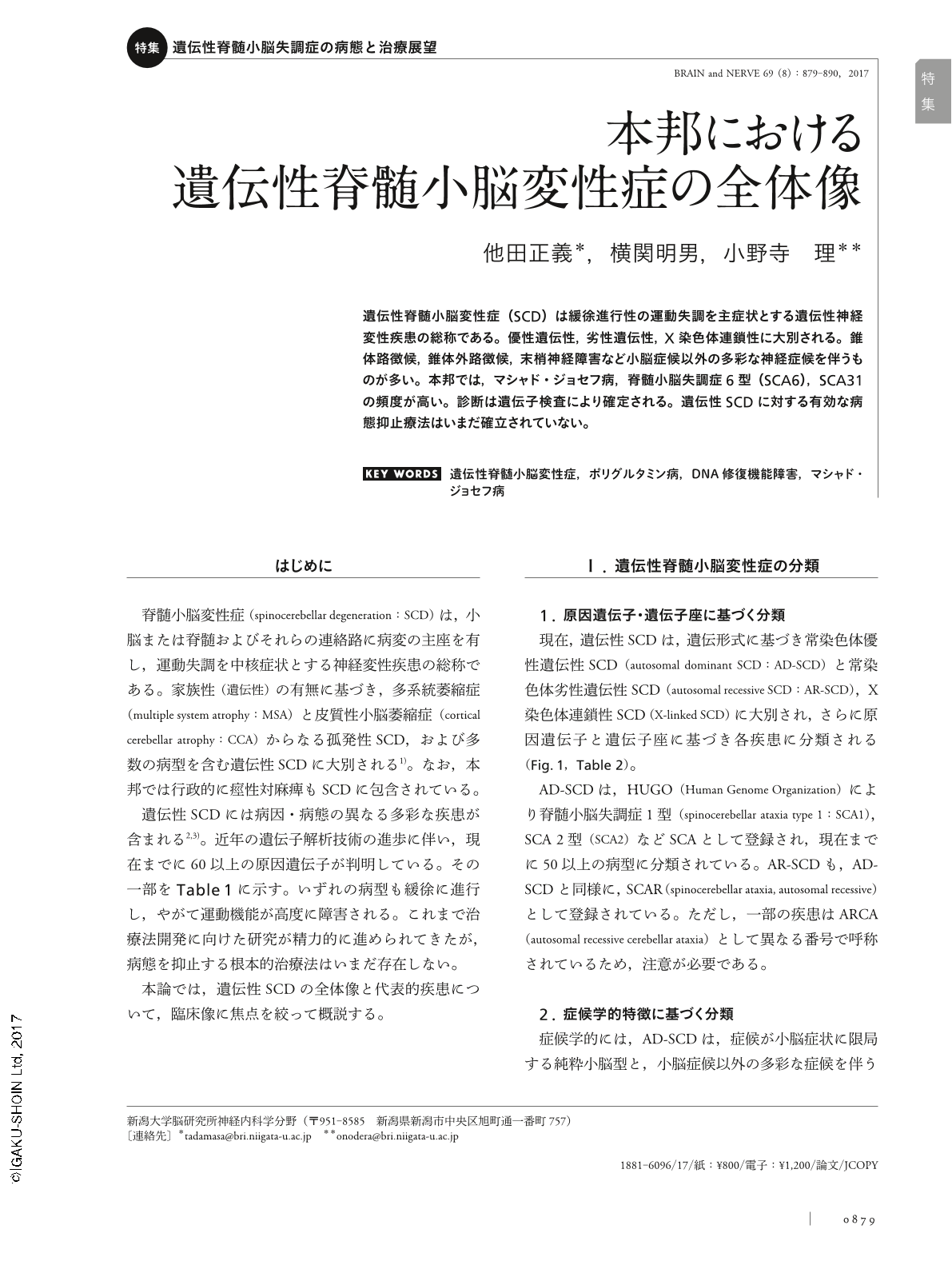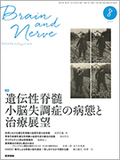Japanese
English
- 有料閲覧
- Abstract 文献概要
- 1ページ目 Look Inside
- 参考文献 Reference
遺伝性脊髄小脳変性症(SCD)は緩徐進行性の運動失調を主症状とする遺伝性神経変性疾患の総称である。優性遺伝性,劣性遺伝性,X染色体連鎖性に大別される。錐体路徴候,錐体外路徴候,末梢神経障害など小脳症候以外の多彩な神経症候を伴うものが多い。本邦では,マシャド・ジョセフ病,脊髄小脳失調症6型(SCA6),SCA31の頻度が高い。診断は遺伝子検査により確定される。遺伝性SCDに対する有効な病態抑止療法はいまだ確立されていない。
Abstract
Hereditary spinocerebellar degenerations (SCD) are a group of neurodegenerative disorders characterized by slowly progressive ataxia associated with non-cerebellar neurological signs and symptoms. In the Japanese population, dominantly inherited SCDs are much more common than recessively inherited or X-linked SCDs. The most common dominantly inherited SCD in Japan, as well as in many other countries, is Machado-Joseph disease, also known as spinocerebellar ataxia type 3 (MJD/SCA3). MJD/SCA3 is frequently accompanied by non-cerebellar symptoms, including progressive external ophthalmoplegia, pyramidal signs, dystonia, rigidity, dysarthria, and distal muscle atrophies. SCA6 and SCA31 represent a pure cerebellar subtype of SCD, occasionally accompanied by non-cerebellar signs. Detailed medical history and neurological examination are important for clinicians to diagnose hereditary SCDs, although genetic testing can help confirm the diagnosis. Despite increasing understanding of the molecular mechanisms underlying these fatal diseases, preventive therapies are currently lacking.

Copyright © 2017, Igaku-Shoin Ltd. All rights reserved.


